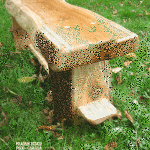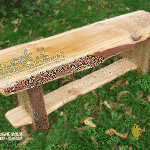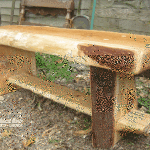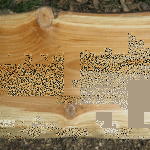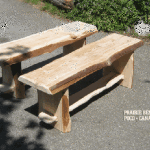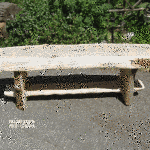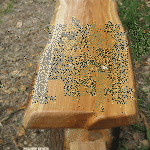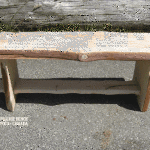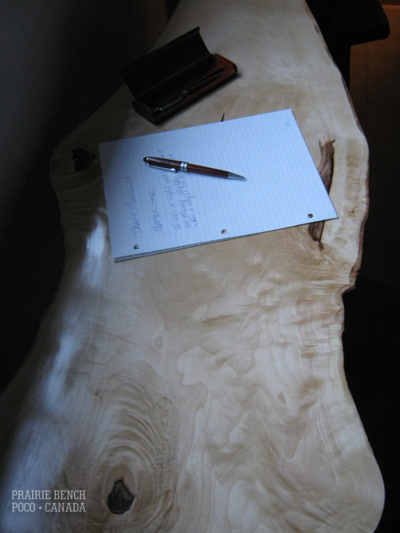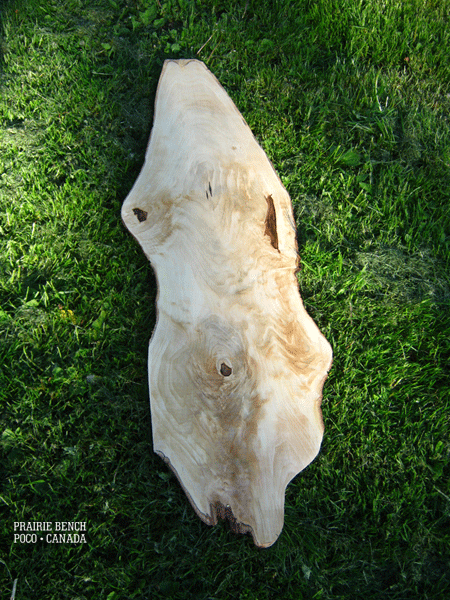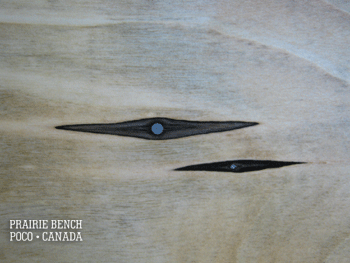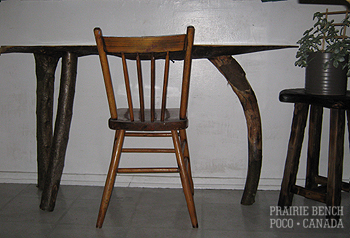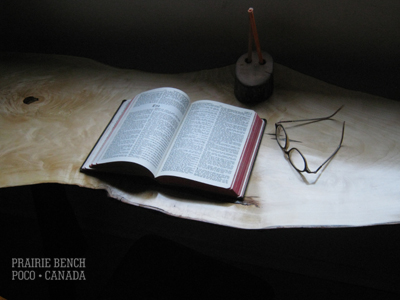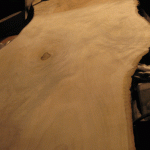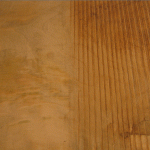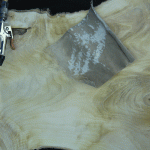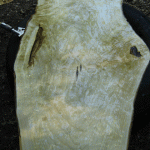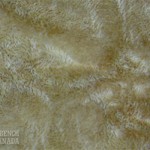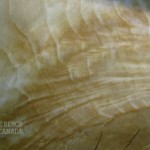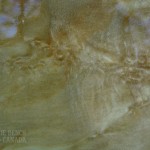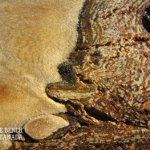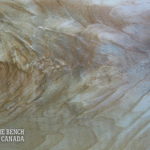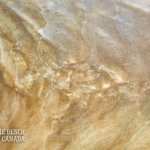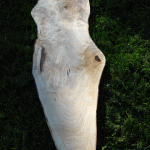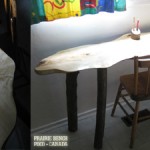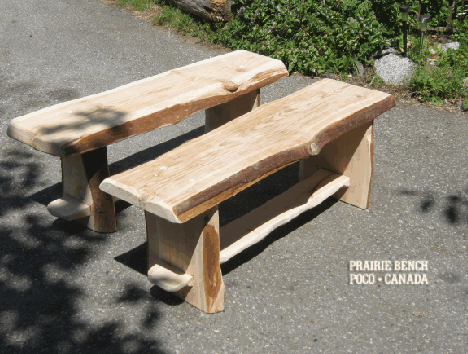
Here’s two more benches to add to our Woodland Collection. A client chose two cedar slabs for patio benches. Each was approximately 7′ long x 18″ wide and 3″ thick. This enabled us to lop off the ends and stack it upright for legs and a seat. A hemlock trestle was added for stability. We split the leg, notch out the join by hand, and glue the entire piece back together with hazelnut dowels for support.
Each bench was left with live edges, saw marks and unique knots. The surface was ground with 80 grit, then 120. The edges were ground to remove any slivers and the entire bench was soaked in poly. The bench is turned upside down and poly is poured into the open grain to make it last for years outdoors. Any finish will eventually wear away with use, sun, and rain, but the client can easily wipe some on whenever they want to restore that sheen.
Cedar has long strands that like to peel away from the core. It’s a good carving wood for vertical designs, however the cut edges can remain rough no matter how much sanding. That’s just a characteristic of this wood. Hardwoods, like maple and birch, can be polished to a fine finish from any angle, but cedar is great for that rugged, outdoor style.
#137 BL 07 13
#138 BL 07 13
Approximate sizes: 42″ long 18″ deep 17″ tall.
Wood source: hawleyscape.com

